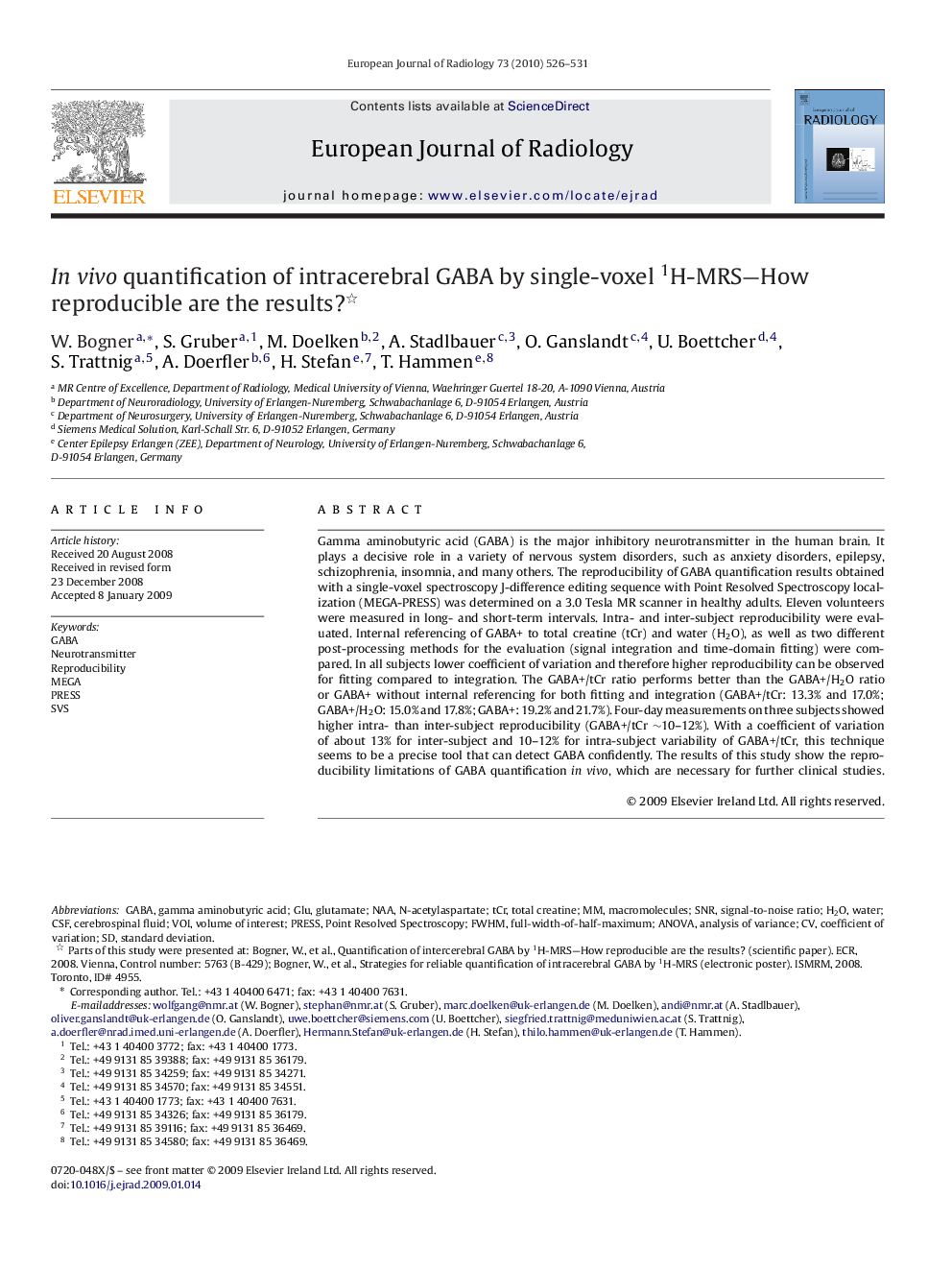| Article ID | Journal | Published Year | Pages | File Type |
|---|---|---|---|---|
| 4226848 | European Journal of Radiology | 2010 | 6 Pages |
Gamma aminobutyric acid (GABA) is the major inhibitory neurotransmitter in the human brain. It plays a decisive role in a variety of nervous system disorders, such as anxiety disorders, epilepsy, schizophrenia, insomnia, and many others. The reproducibility of GABA quantification results obtained with a single-voxel spectroscopy J-difference editing sequence with Point Resolved Spectroscopy localization (MEGA-PRESS) was determined on a 3.0 Tesla MR scanner in healthy adults. Eleven volunteers were measured in long- and short-term intervals. Intra- and inter-subject reproducibility were evaluated. Internal referencing of GABA+ to total creatine (tCr) and water (H2O), as well as two different post-processing methods for the evaluation (signal integration and time-domain fitting) were compared. In all subjects lower coefficient of variation and therefore higher reproducibility can be observed for fitting compared to integration. The GABA+/tCr ratio performs better than the GABA+/H2O ratio or GABA+ without internal referencing for both fitting and integration (GABA+/tCr: 13.3% and 17.0%; GABA+/H2O: 15.0% and 17.8%; GABA+: 19.2% and 21.7%). Four-day measurements on three subjects showed higher intra- than inter-subject reproducibility (GABA+/tCr ∼10–12%). With a coefficient of variation of about 13% for inter-subject and 10–12% for intra-subject variability of GABA+/tCr, this technique seems to be a precise tool that can detect GABA confidently. The results of this study show the reproducibility limitations of GABA quantification in vivo, which are necessary for further clinical studies.
